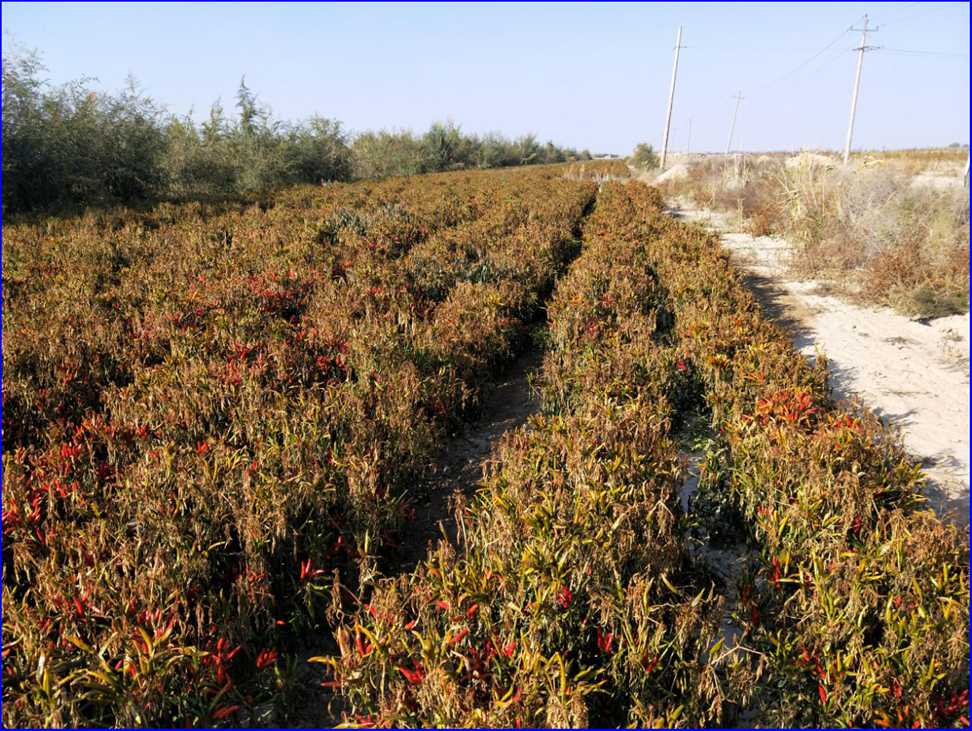
(Correspondent Li Fangfang) Due to the long hours of sunlight and the large temperature difference between day and night, the peppers produced in Xinjiang have high yields, good quality, high dry matter and red pigment content, and few diseases and insect pests, which are conducive to mechanized large-scale planting. At present, Xinjiang has become an important production area of ​​dried chili and an ideal industrial chili production and processing base in China. It is understood that the current planting area is 700,000 mu, with an annual output of more than 300,000 tons of dried pepper, which accounts for 1/5 of the country's annual output.
Although Xinjiang is suitable for growing peppers, the planting time is different from other provinces due to climate reasons, so it is very important to grasp the timing of planting. Pepper growers Li, Sun, and Zhao from the 130th Regiment of the Seventh Division planted about 600 acres of peppers this year, but because Party A Liu provided pepper seedlings too late, the peppers were still immature after the frost. This has caused considerable losses to this year's harvest. In order to find out the losses, Li and the others approached Xinjiang Zhenguanda Agricultural Technology Co., Ltd., and applied for agricultural technical experts to appraise the pepper fields on site.
After the company accepted the commission, the appraisers Chen Jinmei, Hasyetti Husayin, and the price appraisers Sang Liwen and Li Kaiying were appointed to form an appraisal team, and Chen Jinmei and Hasyetti Husayin appeared. Conducted on-site inspections and investigations on the identified location and comparison with the same area.
The company's promotion researcher Chen Jinmei found in the field investigation that Li and the other three could see that the leaves of peppers were wilted after frost, the lower fruits were ripe and the fruits were red, and the upper fruits were still green due to insufficient growth period and no color change. Fruits with severe frost are "hot", and some fruits fade and turn white after dehydration. The red pepper fruit that has not matured has lost its commercial value. In addition, peppers with late growth and poor maturity are extremely unfavorable for mechanical harvesting, affecting the overall quality and yield of peppers, and causing losses.
Price appraisalist Sang Liwen said that according to the results of field surveys, the average dry pepper output of the identified land was 151 kg/mu, and the ratio of dry and fresh pepper was calculated at 1:4.3, and the average fresh pepper output was 649.3 kg/mu. Planting in the same region, the same planting contract, and the control land with different planting time, the average dry pepper yield was 589.5 kg/mu, and the ratio of dry and fresh pepper was calculated at 1:4.3, and the average fresh pepper yield was 2534.9 kg/mu. From this calculation, the yield loss due to late planting of pepper seedlings and late ripening of peppers is: the average yield loss of dried peppers is 328.9 kg/mu; the average yield loss of fresh peppers is 1414.2 kg/mu.
At the same time, the senior agronomist Hasti Hu Sayin reminded farmers: Because of the big difference between Xinjiang and other provinces due to the climate, peppers are generally planted in January and February. The planting period is from mid-March to early April. From the end of the month to the beginning of October, harvest before the frost season. During this period, the pepper fruits are fully mature, with bright color and good quality.
Blood Glucose Meter,Blood Sugar Monitor,Blood Glucose Testing,Blood Sugar Test Kit
Wuxi BioHermes Bio & Medical Technology Co., Ltd. , https://www.biohermesglobal.com